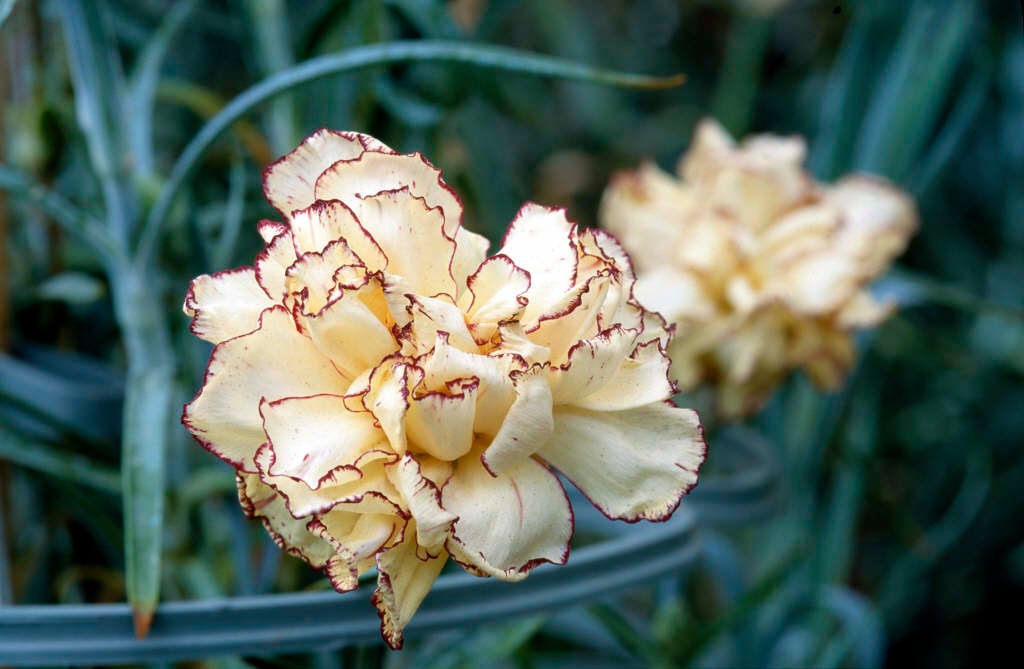Not the plant you're looking for? Search over 300,000 plants
Conservatory Greenhouse
Size
Ultimate height
0.5–1 metresTime to ultimate height
2–5 yearsUltimate spread
0.1–0.5 metresGrowing conditions
Chalk
Loam
Sand
Moisture
Well–drainedpH
Alkaline, NeutralColour & scent
| Stem | Flower | Foliage | Fruit | |
| Spring | Green Grey Silver | |||
|---|---|---|---|---|
| Summer | Purple Yellow | Green Grey Silver | ||
| Autumn | Green Grey Silver | |||
| Winter | Green Grey Silver |
Position
- Full sun
Aspect
South–facing or West–facing or East–facing
Exposure
Sheltered Hardiness
H2Botanical details
- Family
- Caryophyllaceae
- Native to GB / Ireland
- No
- Foliage
- Evergreen
- Habit
- Bushy
- Potentially harmful
- Humans/Pets: Skin allergen, wear gloves and other protective equipment when handling. For further information and contact numbers regarding pets, see the HTA guide to potentially harmful plants
- Genus
Dianthus can be annuals, evergreen perennials or subshrubs with narrow, often greyish leaves and showy flowers that are frequently fragrant
- Name status
Accepted
- Horticultural Group
- Perpetual flowering carnations are half-hardy evergreen perennials grown under glass for cut flowers and for exhibition. Given temperatures above 10°C, they can flower all year round, the blooms to 10cm across, sometimes scented
How to grow
Cultivation
Grow in a well-drained, neutral to alkaline soil in full sun. Prefers a soil enriched with well-rotted manure or garden compost and an application of a balanced fertiliser in spring
Propagation
Propagate by softwood cuttings of non-flowering shoots in summer or by layering after flowering
Suggested planting locations and garden types
- Patio and container plants
Pruning
Deadhead regularly to prolong flowering
Pests
Diseases
May be susceptible to powdery mildews, a rust, a virus and fusarium wilt
Get involved
The Royal Horticultural Society is the UK’s leading gardening charity. We aim to enrich everyone’s life through plants, and make the UK a greener and more beautiful place.
